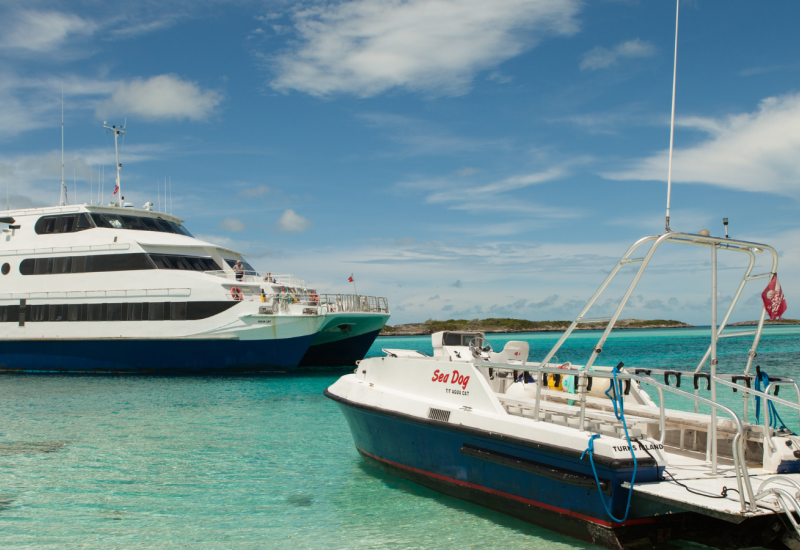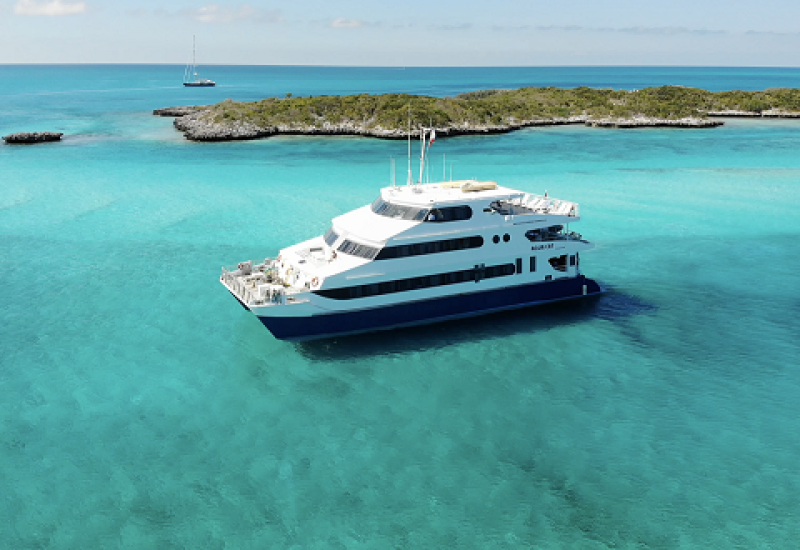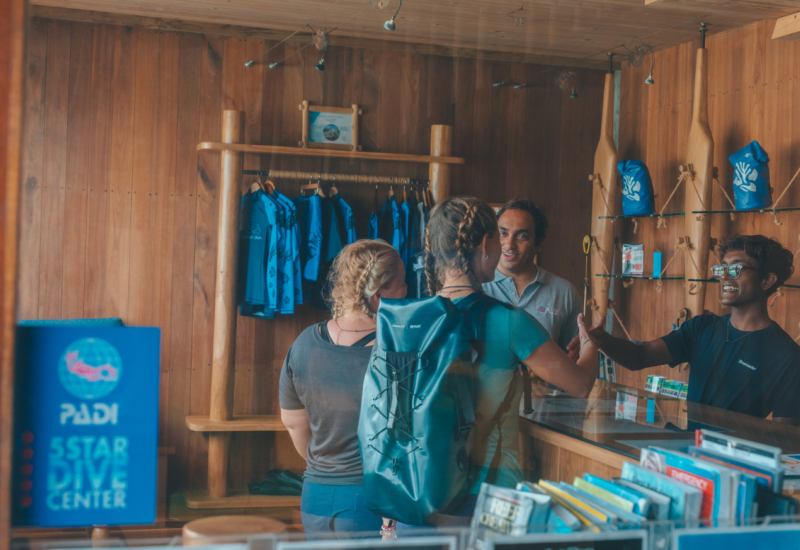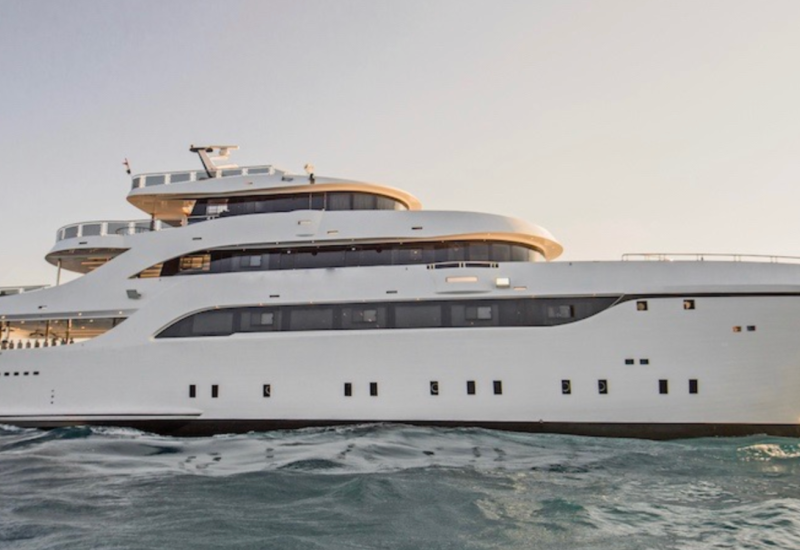Liveaboard Diving on Australia's Great Barrier Reef
When a dive briefing predicts lionfish, nudibranchs, schooling snapper and minke whales, you realize you’re someplace special. Whales and snails at the same site?
With more than 1,500 species of fish, many times that in invertebrates, and nearly guaranteed sightings of dwarf minke whales in season, Australia’s Great Barrier Reef is all about superlatives. It’s Earth’s largest living thing, a bucket-list experience for millions of divers. But how many know that Lighthouse Bommie and other superb sites offer excellent odds of witnessing multi-ton charismatic megafauna just by looking up from your macro photo subjects?
I’ve come to the oceans Down Under in late June for a minke whale expedition on Australia’s most awarded liveaboard. Purpose-built for Mike Ball Dive Expeditions, Spoilsport is celebrating 25 years of undersea exploration, and was the ideal way to meet the GBR’s unique wintertime celebrities up close and personal. As in, “Please, Mr. Minke, back up a bit so I can take your picture” close.
Such is my current predicament. The dwarf minke is a beautiful creature with a sleek, elegant profile and artfully patterned gray, black and white flanks. At around 20 feet long, it isn’t particularly huge by baleen whale standards, but right now this gentle giant completely fills my world. And we’re not alone. A dozen whales are below, taking turns magically appearing in pairs and threesomes from all directions. Some roll upside down, flashing bright, pleated bellies, while others slip smoothly underneath us in perfect flying formation. One whale exhales a cloud of bubbles. Another opens and closes its mouth. My whale finally decides to glide on by, presenting me with an opportunity to photograph its perfect tail — poetry in motion.
It had started out to be a typical austral winter day at Lighthouse Bommie, 130 nautical miles north of Cairns, gateway to the GBR and Spoilsport’s home port. After listening to the briefing, I opted to focus on reliable reef subjects. Things went swimmingly — the snappers at 60 feet were especially photogenic, and the longnose hawkfsh in the black coral amazingly cooperative — when I began to hear a strange moaning, singing, grunting noise. I ignored it and proceeded to enjoy the last 10 minutes of my dive, circling the pinnacle up to its crest at 20 feet. There was that noise again — and why were eight divers on the deco bar, all staring out into the blue?
Shadows in the distance became whales ... lots of whales. I was tempted to stay forever, sucking my tank dry and drifting into a minke whale coma. But knowing that closer views — and unlimited viewing time — awaited snorkelers on the surface lines, I climbed back on board to be met by ecstatic divers rapidly shedding their scuba kit. I joined the fray and slipped into the water to float along one of the buoyed surface lines.
So began an eight-hour odyssey, hanging on the rope and bobbing at the surface. I spent the rest of the day in awe: observing, photographing, singing to the whales, and trying to communicate with them on some higher level by tapping into an imagined ability to send telepathic waves of goodwill and understanding. I was completely smitten, and perhaps even solidly converted to the tribe of metaphysical whale lovers. I skipped second breakfast and lunch, refusing to get out the water, unwilling to miss any minke magic.
The _Spoilsport _team has dealt with my kind before. They realize some people have traveled across the world for this experience. Dive all day, or overload on whales? Your choice. Along with a few other hard-core kindred spirits, I chose to whisper to the whales until sunset. Others alternated between scuba time on the reef and whale time on the lines.
Over the next few days, I added to my nitrogen load, injecting a number of great reef dives into my logbook to justify yet more off-gassing surface intervals with whales. The family of lunker resident potato cod at Cod Hole was as friendly as I remembered. Snake Pit was writhing with olive sea snakes and colorful crinoids. Coral gardens at Acropolis and Challenger Bay were busy with fish cleaning and being cleaned, and more fish avoiding predators or preying on others. At Pixie Wall, our divemaster found two pink leaf scorpionfish on a gorgeous bommie at 95 feet, busy with clouds of shimmering glassfish and bristling with green cup coral trees.
Crowd favorite Steve’s Bommie knocked me out of kilter again. I was fine with the schooling barracuda, gangs of blue-green jacks attacking fusiliers, and a wobbegong shark lurking beneath the coral. I even managed to stay on task when shown four — yes, four! — deadly stonefish lounging about. But when I heard that weird noise again, I lost it. And I spent the next five hours hanging on the surface line, flapping around like yesterday’s laundry while minkes stole the show.
Researchers have identified 300-plus individual dwarf minke whales on the GBR, the only place known where they predictably aggregate, although their total population is unknown. But no one is certain why they’re there. This might be a meet-and-greet spot for teenage minkes, a gathering place for prebreeding courtship and socializing among 15- to 20-foot subadults. (Full-grown adults top 25 feet but are rarely sighted on the GBR; all Spoilsport whale expeditions have a scientist on board conducting research, and sharing his or her experience and knowledge with guests.)
Whatever’s happening behind the scenes, there’s no doubt that this world-class encounter is on the whales’ terms. Year after year, they keep approaching dive boats of their own free will. Exactly why these cetaceans voluntarily come in close, and spend hours and hours interacting with humans, remains a mystery. Mike Ball, Spoilsport’s owner and the region’s most experienced operator, says: “When first starting our minke trips 20 years ago, we thought we’d have to search for them. Quite the opposite. They find us! The whales are naturally inquisitive, as interested in us as we are in them. Our sightings keep getting better and better.”
For me, the defining moment comes late in the day under heavy clouds, with the water deepening to indigo. A whale with a silver swoosh marking has cleverly crept up behind me. It’s right there, dead still. Its eye, so clearly defined, is encircled by soft wrinkles. I’m mesmerized as the orb rotates left and right, up and down, studying me intently. It’s quite an honor to be ogled by a minke whale, a being whose kind gaze shines with the wisdom of the ages.
RULES OF ENGAGEMENT
Only permitted vessels are allowed to conduct whale swims. People must neither swim toward a whale, nor touch them. Avoid all rapid movements when in the water. Remain on the surface and in contact with the surface line. Use snorkeling gear only, without a weight belt. Only natural light is allowed for photography and videography. Enter and exit the water quietly. If approached by a whale while scuba diving, remain calm, stay put, and hold onto a mooring line or safety bar when available. For more information: minkewhaleproject.org.
NEED TO KNOW
When to Go: Though Australia’s Great Barrier Reef is great year-round, minke whales are seasonal visitors, with sightings peaking in June and July.
Dive Conditions: Wintertime water temps during minke season average 75 to 77 degrees F. Visibility ranges from 50 to 100 feet. Currents can be gentle to strong, depending on moon phase and location. Pay attention to briefings.
Operator: Mike Ball Dive Expeditions’ 100-foot steel catamaran Spoilsport is renowned for stability and comfort, and its 12 crew for professionalism, attention to detail, and great attitude. Spoilsport carries 28 passengers in varying accommodations. (mikeball.com)
Price Tag: Spoilsport offers three-, four- and seven-night minke expeditions, with prices starting at $1,632 for the shorter cruise.
5 REASONS TO DIVE THE GREAT BARRIER REEF ON SPOILSPORT
1. Whales: Spoilsport has a 98 percent success rate of providing guests with life-changing dwarf minke whale in-water encounters.
2. Reef critters: It’s the perfect blend of creatures great and small. Whereas many of the world’s big-animal expeditions are one-trick ponies (you see the big guy, or nothing at all), Spoilsport minke whale expeditions let you have your blubber and reef life too.
3. Citizen Science: Contribute to our knowledge base on dwarf minke whales by sharing your observations and photos with the Minke Whale Project and James cook University ([minkewhale project.org](minkewhale project.org)).
4. Freedom: Offering an open dive deck, crew-guided or self-guided dives, no restrictions on bottom times, and solo diving for those qualified, Spoilsport is rebreather friendly as well.
5. Local Color: The long-serving crew are passionate about everything they do on board the vessel, including hosting a musical soiree on every expedition, where you can sing like an Aussie, try kangaroo off the barbie, and participate in a photo contest.
For More Liveaboards Around the Globe:
Book Now! | Aboard the Philippine Siren | Humpback Whale Sightings Via the Kona Aggressor II
When a dive briefing predicts lionfish, nudibranchs, schooling snapper and minke whales, you realize you’re someplace special. Whales and snails at the same site?
With more than 1,500 species of fish, many times that in invertebrates, and nearly guaranteed sightings of dwarf minke whales in season, Australia’s Great Barrier Reef is all about superlatives. It’s Earth’s largest living thing, a bucket-list experience for millions of divers. But how many know that Lighthouse Bommie and other superb sites offer excellent odds of witnessing multi-ton charismatic megafauna just by looking up from your macro photo subjects?
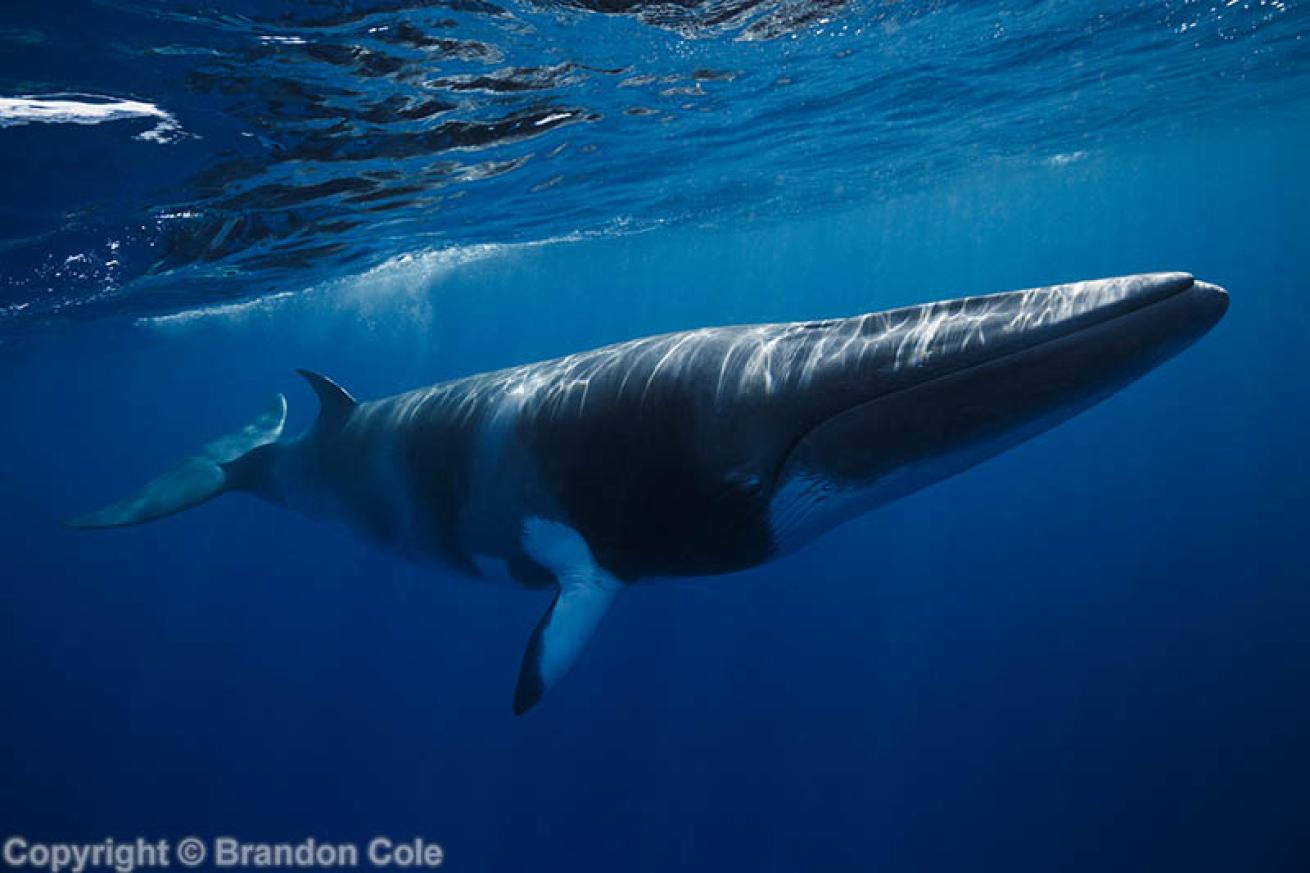
Brandon ColeMinke whales are about 20 feet long and can be seen rolling upside down, revealing their bright, pleated bellies.
I’ve come to the oceans Down Under in late June for a minke whale expedition on Australia’s most awarded liveaboard. Purpose-built for Mike Ball Dive Expeditions, Spoilsport is celebrating 25 years of undersea exploration, and was the ideal way to meet the GBR’s unique wintertime celebrities up close and personal. As in, “Please, Mr. Minke, back up a bit so I can take your picture” close.
Such is my current predicament. The dwarf minke is a beautiful creature with a sleek, elegant profile and artfully patterned gray, black and white flanks. At around 20 feet long, it isn’t particularly huge by baleen whale standards, but right now this gentle giant completely fills my world. And we’re not alone. A dozen whales are below, taking turns magically appearing in pairs and threesomes from all directions. Some roll upside down, flashing bright, pleated bellies, while others slip smoothly underneath us in perfect flying formation. One whale exhales a cloud of bubbles. Another opens and closes its mouth. My whale finally decides to glide on by, presenting me with an opportunity to photograph its perfect tail — poetry in motion.
It had started out to be a typical austral winter day at Lighthouse Bommie, 130 nautical miles north of Cairns, gateway to the GBR and Spoilsport’s home port. After listening to the briefing, I opted to focus on reliable reef subjects. Things went swimmingly — the snappers at 60 feet were especially photogenic, and the longnose hawkfsh in the black coral amazingly cooperative — when I began to hear a strange moaning, singing, grunting noise. I ignored it and proceeded to enjoy the last 10 minutes of my dive, circling the pinnacle up to its crest at 20 feet. There was that noise again — and why were eight divers on the deco bar, all staring out into the blue?
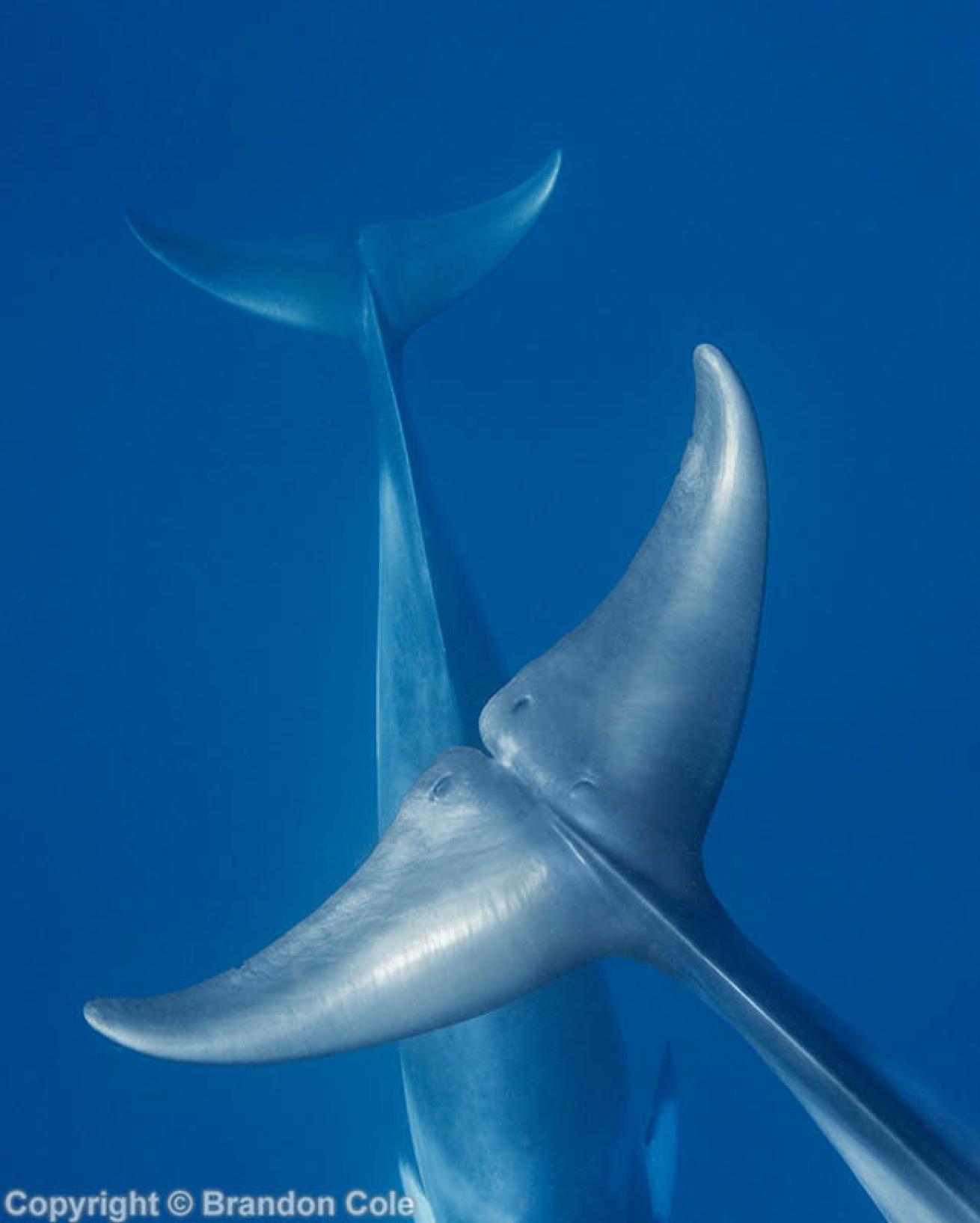
Brandon ColeMinkes are highly maneuverable and fast swimmers. A whale's tail is composed of two flukes. Flukes move up and down to propel the whale through the water.
Shadows in the distance became whales ... lots of whales. I was tempted to stay forever, sucking my tank dry and drifting into a minke whale coma. But knowing that closer views — and unlimited viewing time — awaited snorkelers on the surface lines, I climbed back on board to be met by ecstatic divers rapidly shedding their scuba kit. I joined the fray and slipped into the water to float along one of the buoyed surface lines.
So began an eight-hour odyssey, hanging on the rope and bobbing at the surface. I spent the rest of the day in awe: observing, photographing, singing to the whales, and trying to communicate with them on some higher level by tapping into an imagined ability to send telepathic waves of goodwill and understanding. I was completely smitten, and perhaps even solidly converted to the tribe of metaphysical whale lovers. I skipped second breakfast and lunch, refusing to get out the water, unwilling to miss any minke magic.
The Spoilsport team has dealt with my kind before. They realize some people have traveled across the world for this experience. Dive all day, or overload on whales? Your choice. Along with a few other hard-core kindred spirits, I chose to whisper to the whales until sunset. Others alternated between scuba time on the reef and whale time on the lines.
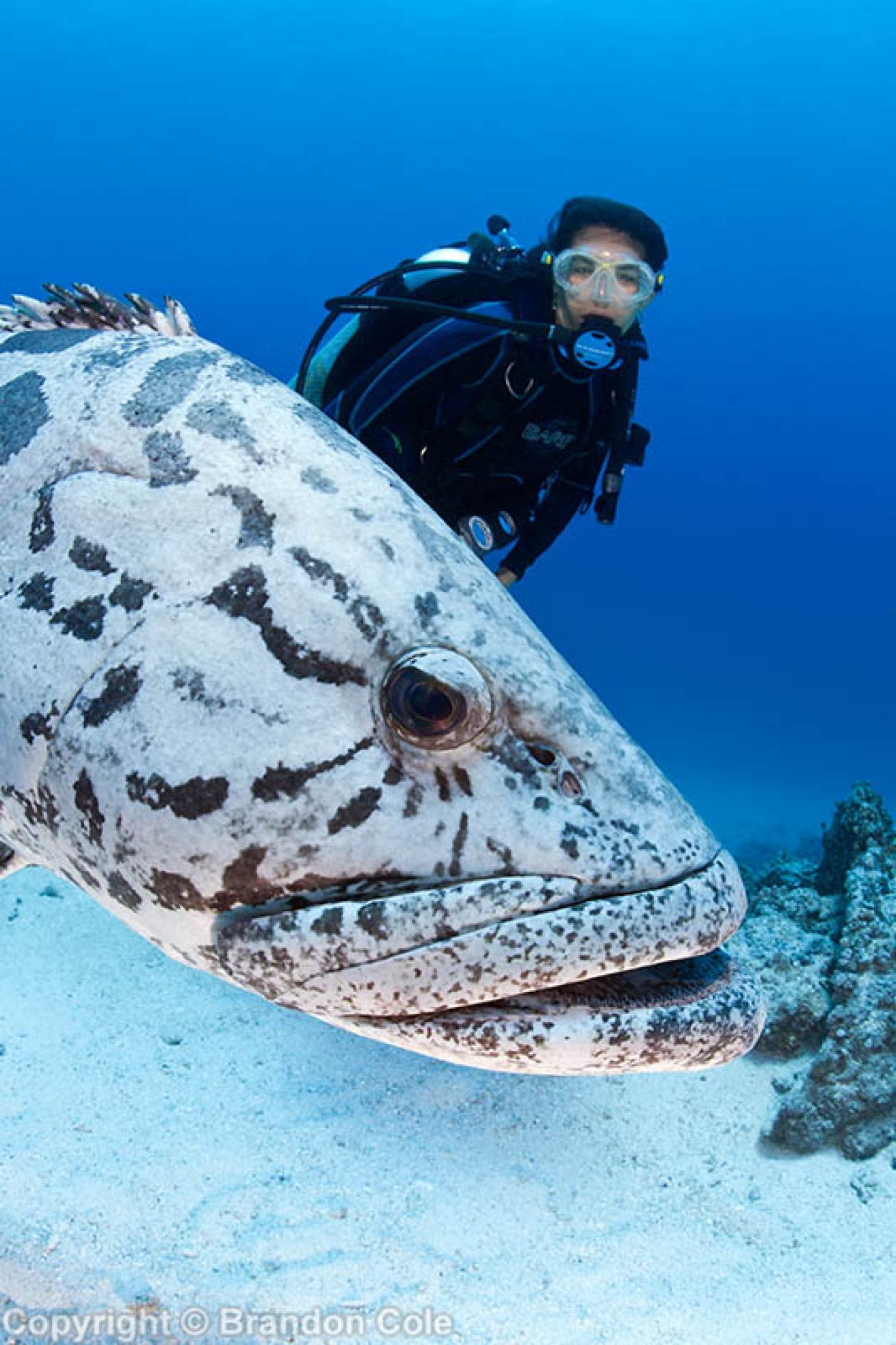
Brandon ColeA potato cod found at — where else? — Cod Hole.
Over the next few days, I added to my nitrogen load, injecting a number of great reef dives into my logbook to justify yet more off-gassing surface intervals with whales. The family of lunker resident potato cod at Cod Hole was as friendly as I remembered. Snake Pit was writhing with olive sea snakes and colorful crinoids. Coral gardens at Acropolis and Challenger Bay were busy with fish cleaning and being cleaned, and more fish avoiding predators or preying on others. At Pixie Wall, our divemaster found two pink leaf scorpionfish on a gorgeous bommie at 95 feet, busy with clouds of shimmering glassfish and bristling with green cup coral trees.
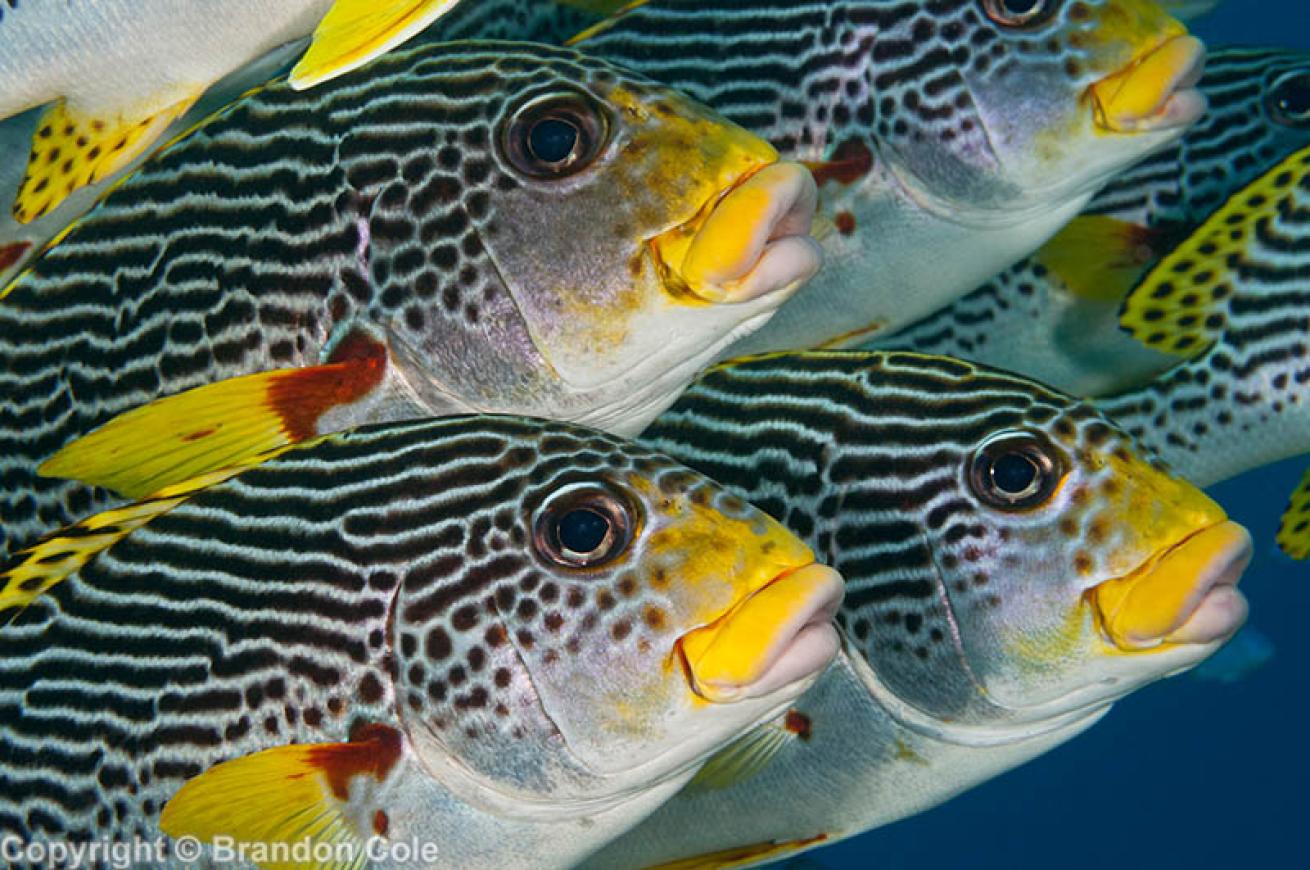
Brandon ColeDiving the Great Barrier Reef on Spoilsport will get you ti dive sites that offer the perfect blend of creatures great and small. These are diagonal-banded sweetlips.
Crowd favorite Steve’s Bommie knocked me out of kilter again. I was fine with the schooling barracuda, gangs of blue-green jacks attacking fusiliers, and a wobbegong shark lurking beneath the coral. I even managed to stay on task when shown four — yes, four! — deadly stonefish lounging about. But when I heard that weird noise again, I lost it. And I spent the next five hours hanging on the surface line, flapping around like yesterday’s laundry while minkes stole the show.
Researchers have identified 300-plus individual dwarf minke whales on the GBR, the only place known where they predictably aggregate, although their total population is unknown. But no one is certain why they’re there. This might be a meet-and-greet spot for teenage minkes, a gathering place for prebreeding courtship and socializing among 15- to 20-foot subadults. (Full-grown adults top 25 feet but are rarely sighted on the GBR; all Spoilsport whale expeditions have a scientist on board conducting research, and sharing his or her experience and knowledge with guests.)
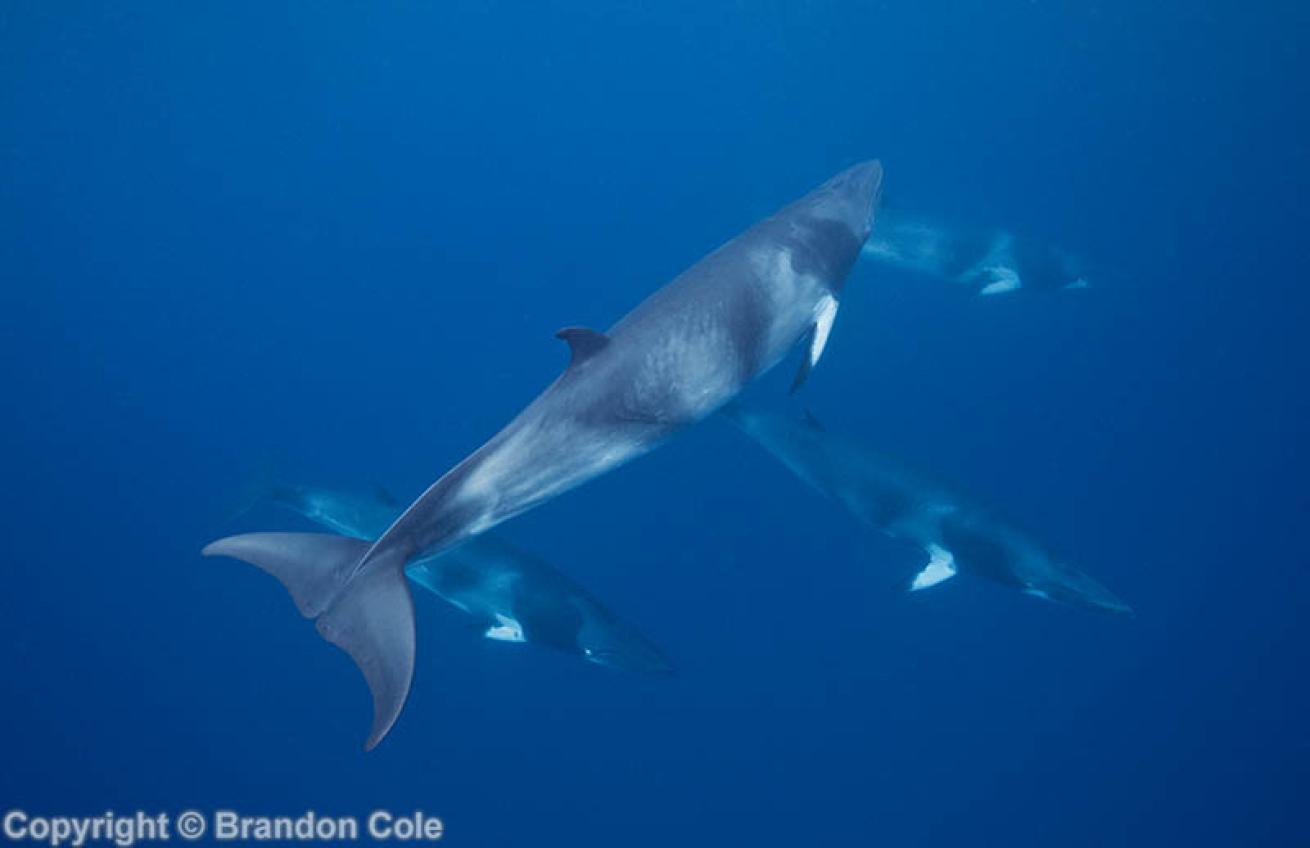
Brandon ColeThere are plenty of opportunities to get up close and personal with minke whales along the Great Barrier Reef aboard the Spoilsport.
Whatever’s happening behind the scenes, there’s no doubt that this world-class encounter is on the whales’ terms. Year after year, they keep approaching dive boats of their own free will. Exactly why these cetaceans voluntarily come in close, and spend hours and hours interacting with humans, remains a mystery. Mike Ball, Spoilsport’s owner and the region’s most experienced operator, says: “When first starting our minke trips 20 years ago, we thought we’d have to search for them. Quite the opposite. They find us! The whales are naturally inquisitive, as interested in us as we are in them. Our sightings keep getting better and better.”
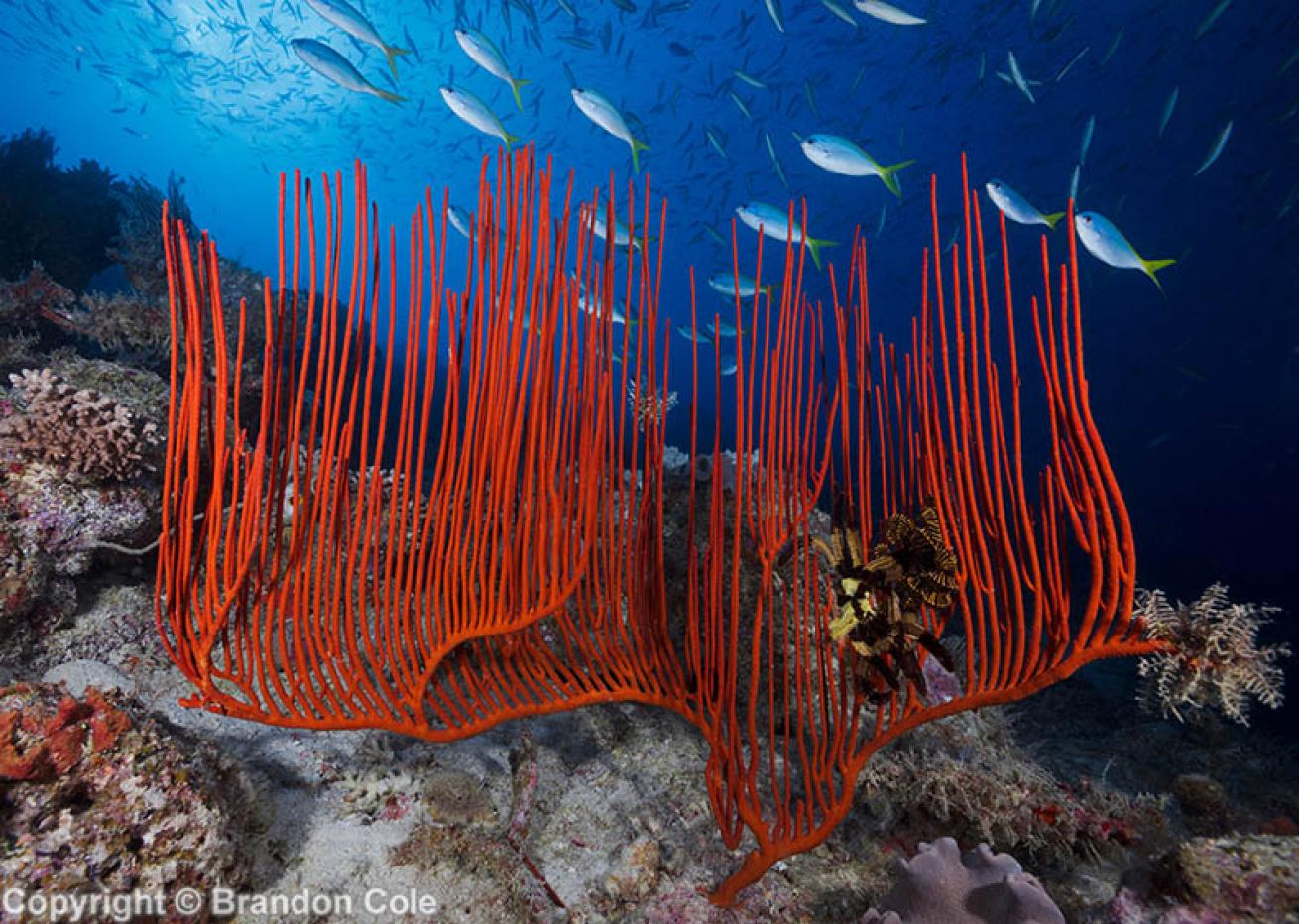
Brandon ColeColorful fusiliers school above an equally colorful harp fan.
For me, the defining moment comes late in the day under heavy clouds, with the water deepening to indigo. A whale with a silver swoosh marking has cleverly crept up behind me. It’s right there, dead still. Its eye, so clearly defined, is encircled by soft wrinkles. I’m mesmerized as the orb rotates left and right, up and down, studying me intently. It’s quite an honor to be ogled by a minke whale, a being whose kind gaze shines with the wisdom of the ages.
RULES OF ENGAGEMENT
Only permitted vessels are allowed to conduct whale swims. People must neither swim toward a whale, nor touch them. Avoid all rapid movements when in the water. Remain on the surface and in contact with the surface line. Use snorkeling gear only, without a weight belt. Only natural light is allowed for photography and videography. Enter and exit the water quietly. If approached by a whale while scuba diving, remain calm, stay put, and hold onto a mooring line or safety bar when available. For more information: minkewhaleproject.org.
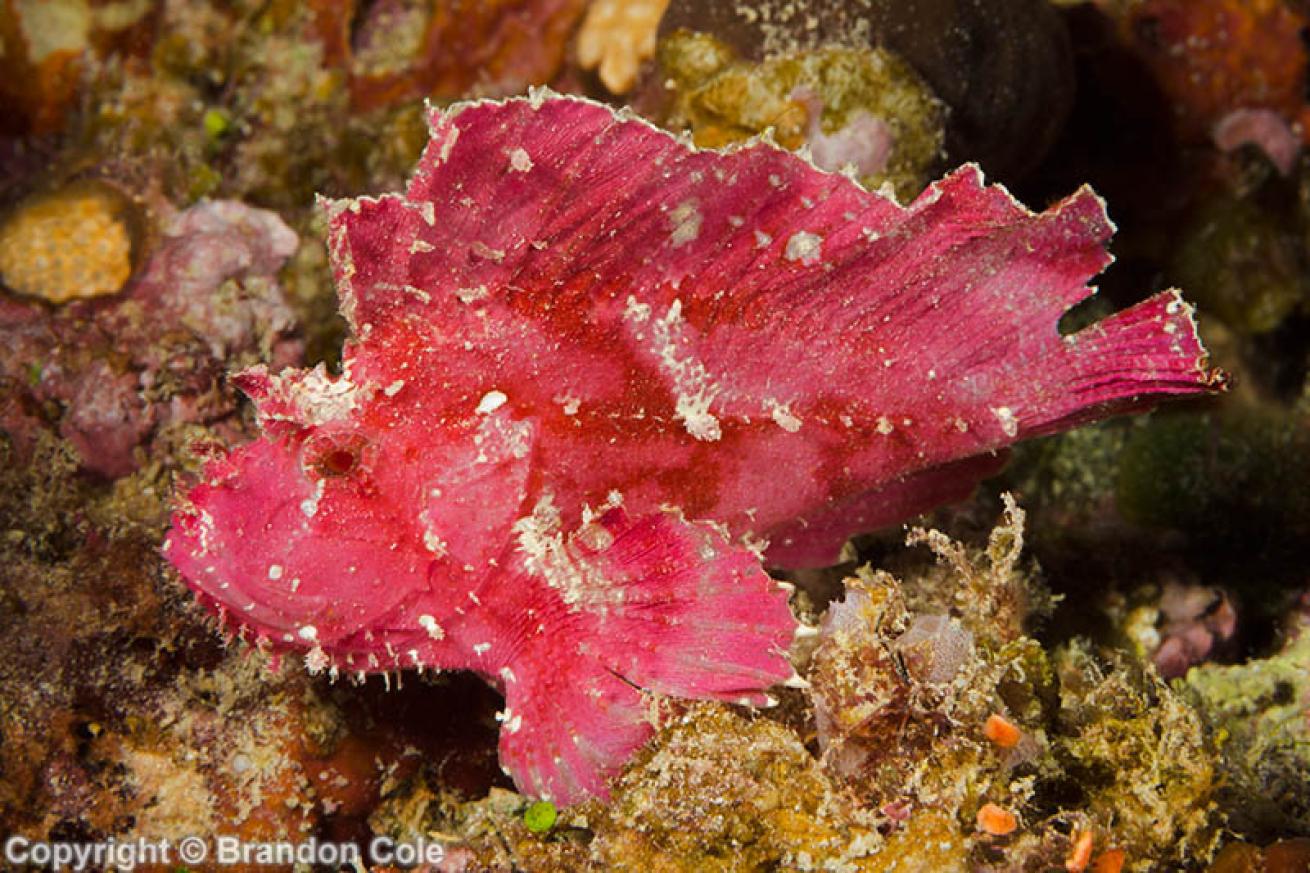
Brandon ColeAn ambush predator, this leaf scorpionfish was hunkered down on Pixie Wall.
NEED TO KNOW
When to Go: Though Australia’s Great Barrier Reef is great year-round, minke whales are seasonal visitors, with sightings peaking in June and July.
Dive Conditions: Wintertime water temps during minke season average 75 to 77 degrees F. Visibility ranges from 50 to 100 feet. Currents can be gentle to strong, depending on moon phase and location. Pay attention to briefings.
Operator: Mike Ball Dive Expeditions’ 100-foot steel catamaran Spoilsport is renowned for stability and comfort, and its 12 crew for professionalism, attention to detail, and great attitude. Spoilsport carries 28 passengers in varying accommodations. (mikeball.com)
Price Tag: Spoilsport offers three-, four- and seven-night minke expeditions, with prices starting at $1,632 for the shorter cruise.
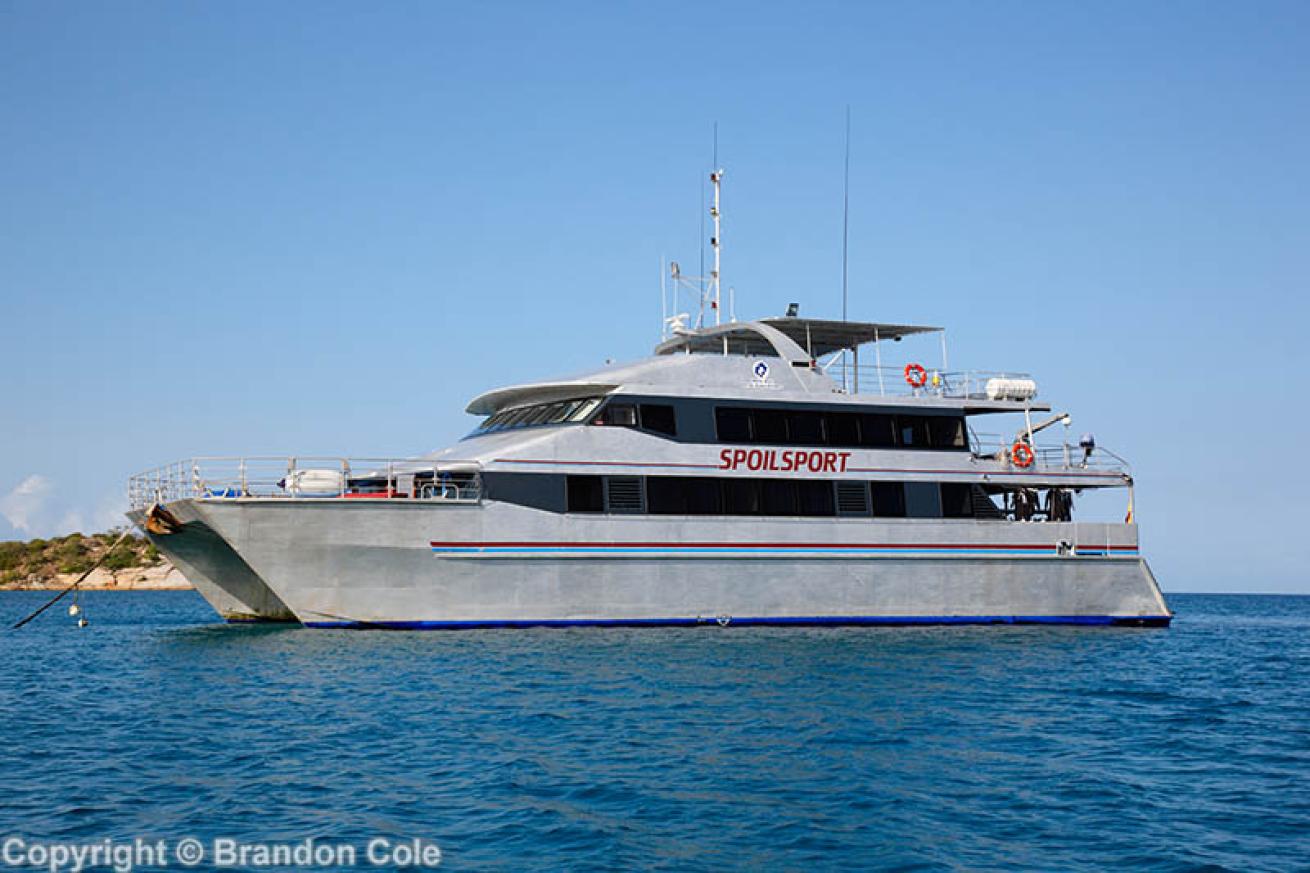
Brandon ColeThe Spoilsport has a 98 percent success rate of providing guests with life-changing dwarf minke whale in-water encounters.
5 REASONS TO DIVE THE GREAT BARRIER REEF ON SPOILSPORT
1. Whales: Spoilsport has a 98 percent success rate of providing guests with life-changing dwarf minke whale in-water encounters.
2. Reef critters: It’s the perfect blend of creatures great and small. Whereas many of the world’s big-animal expeditions are one-trick ponies (you see the big guy, or nothing at all), Spoilsport minke whale expeditions let you have your blubber and reef life too.
3. Citizen Science: Contribute to our knowledge base on dwarf minke whales by sharing your observations and photos with the Minke Whale Project and James cook University ([minkewhale project.org](minkewhale project.org)).
4. Freedom: Offering an open dive deck, crew-guided or self-guided dives, no restrictions on bottom times, and solo diving for those qualified, Spoilsport is rebreather friendly as well.
5. Local Color: The long-serving crew are passionate about everything they do on board the vessel, including hosting a musical soiree on every expedition, where you can sing like an Aussie, try kangaroo off the barbie, and participate in a photo contest.
For More Liveaboards Around the Globe:
Book Now! | Aboard the Philippine Siren | Humpback Whale Sightings Via the Kona Aggressor II

